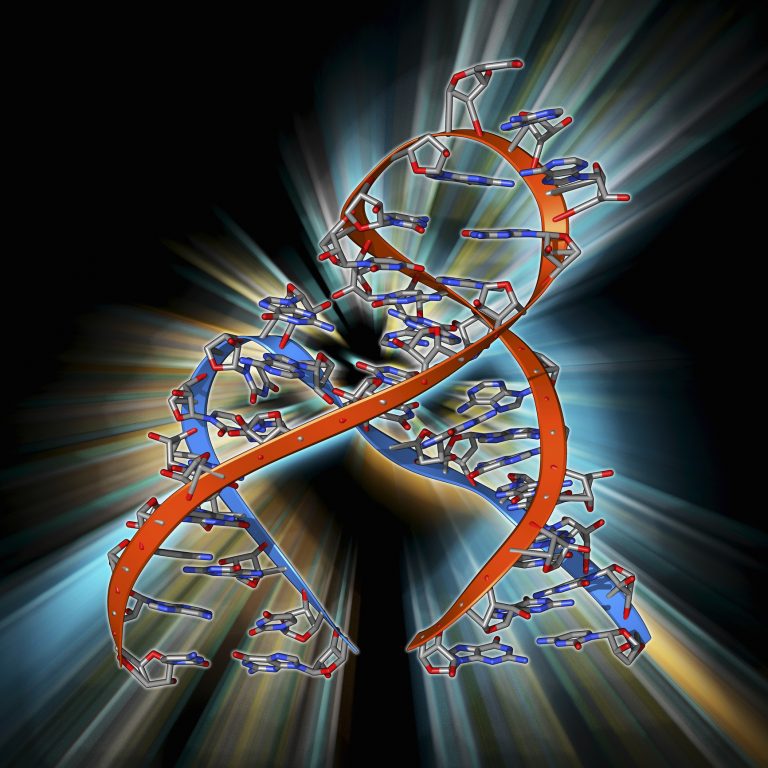
The field of gene therapy is full of promise, with many therapies for genetic diseases currently being tested in clinical trials. Despite this excitement, there are still some stumbling blocks to bringing these gene therapies to patients. One limitation is the lack of small genetic switches with wide dynamic ranges that would allow for the control of transgene expression without the requirement of additional protein components. But, now, a team from the Scripps Research in Jupiter have developed a special molecular switch that could be embedded into gene therapies to control dosing. This new tool may offer gene therapy designers what may be the first viable technique for adjusting the activity levels of therapeutic genes.
The work is published in Nature Biotechnology in an article entitled “A reversible RNA on-switch that controls gene expression of AAV-delivered therapeutics in vivo.”
The team, led by Michael Farzan, PhD, professor of the Department of Immunology and Microbiology engineered a class of type III hammerhead ribozymes to develop RNA switches that are, as they describe, “highly efficient at cis-cleaving mammalian mRNAs and showed that they can be tightly regulated by a steric-blocking antisense oligonucleotide.” Their variant ribozymes enabled in vivo regulation of adeno-associated virus (AAV)-delivered transgenes, allowing dose-dependent and up to 223-fold regulation of protein expression over at least 43 weeks.
“I think that our approach offers the only practical way at present to regulate the dose of a gene therapy in an animal or a human,” Farzan says.
Gene therapies have been viewed as inherently risky because once they are delivered to a patient’s cells, they cannot be switched off or modulated. As a result, only a handful of gene therapies have been FDA-approved to date.
The researchers demonstrated the power of their new switching technique by incorporating it into a gene therapy that produces the hormone erythropoietin, used as a treatment for anemia. They showed that they could suppress expression of its gene to very low levels with a special embedded molecule, and could then increase the gene’s expression, over a wide dynamic range, using injected control molecules called morpholinos that the U.S. Food and Drug Administration has found to be safe for other applications. The simplicity of the technique, and the fact that morpholinos are already FDA-approved, could allow the new transgene switching system to be used in a wide variety of envisioned gene therapies, Farzan adds.
Guocai Zhong, PhD postdoctoral researcher and Haimin Wang, a research assistant in the Farzan lab, crafted a transgene switch from a family of RNA molecules called hammerhead ribozymes. These ribozymes cut themselves in two as soon as they are copied into RNA from the DNA that encodes them.
A therapeutic transgene containing the DNA of such a ribozyme will thus be copied out in cells into strands of RNA that will tend to separate into two pieces before they can be translated into proteins. However, this self-cleaving action of the ribozyme can be blocked by RNA-like morpholinos that latch onto the ribozyme’s active site; if this happens, the transgene transcript will remain intact and will be more likely to be translated into the therapeutic protein.
The ribozyme thus effectively acts as an “off switch” for the transgene, whereas the matching morpholinos, injected into the tissue where the transgene resides, can effectively turn the transgene back “on” again–to a degree that depends on the morpholino dose.
The scientists started with a hammerhead ribozyme called N107 that had been used as an RNA switch in prior studies, but they found that the difference in production of a transgene-encoded test protein between the “off” and “on” state was too modest for this ribozyme to be useful in gene therapies. However, over months of experimentation they were able to modify the ribozyme until it had a dynamic range that was dozens of times wider.
The team then demonstrated the ribozyme-based switch in a mouse model of an EPO gene therapy, which isn’t yet FDA-approved but is considered potentially better than current methods for treating anemia associated with severe kidney disease. They injected an EPO transgene into muscle tissue in live mice and showed that the embedded ribozyme suppressed EPO production to a very low level.
Injection of a small dose of the morpholino molecules into affected tissue strongly reversed that suppression, allowing EPO production to rise by a factor of more than 200—and stay there for more than a week, compared to a half-life of a few hours for EPO delivered by a standard injection. Those properties make the ribozyme-based switch potentially suitable for real clinical applications.
“We got what I would have said before was an impossible range of in vivo regulation from this system,” Farzan says.
Farzan and his colleagues are now working to adapt their ribozyme switch technique so that it can be used as a gene therapy failsafe mechanism, deactivating errant transgenes permanently. These small, modular and efficient RNA switches may improve the safety and efficacy of gene therapies and broaden their use.













